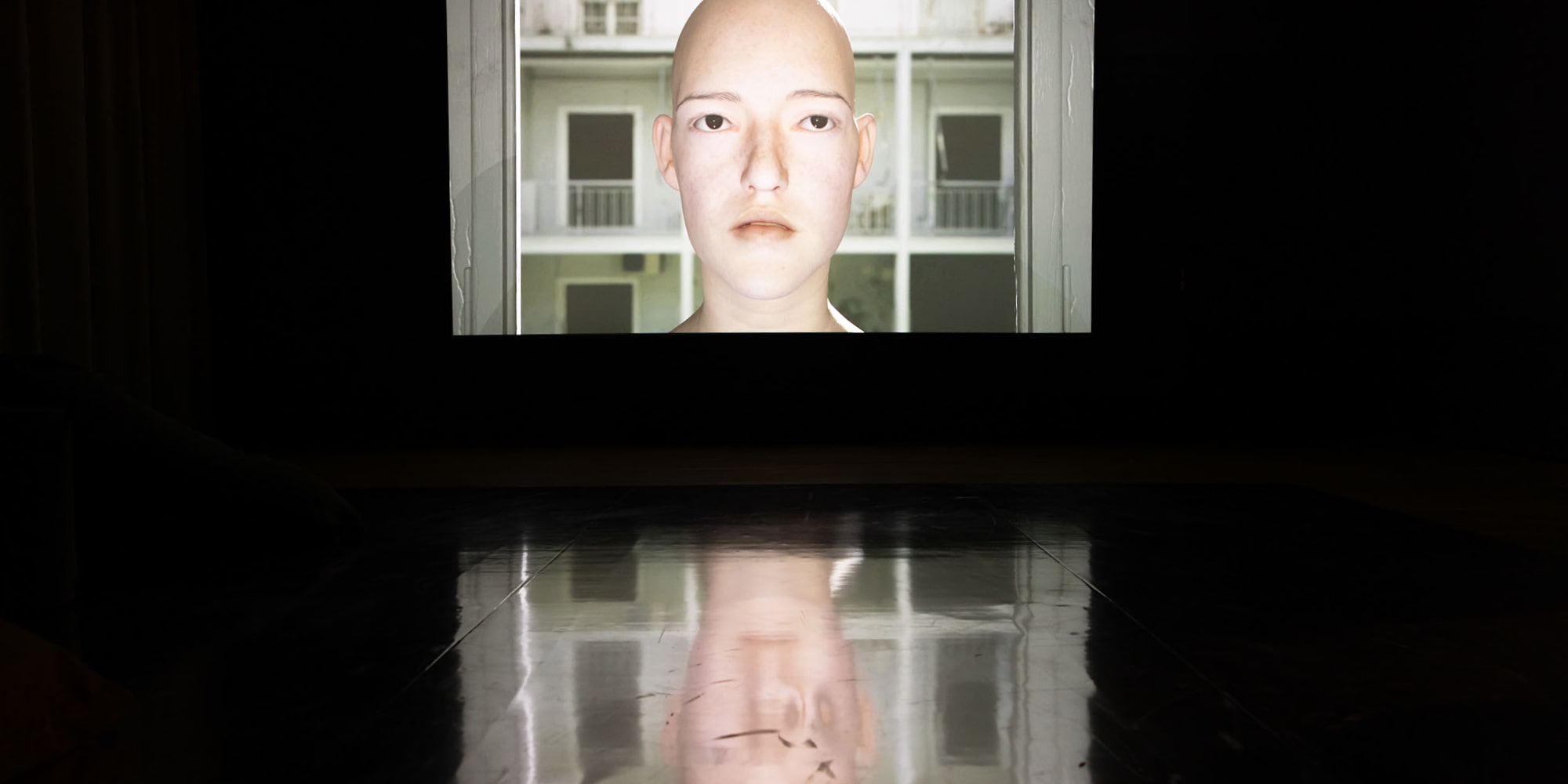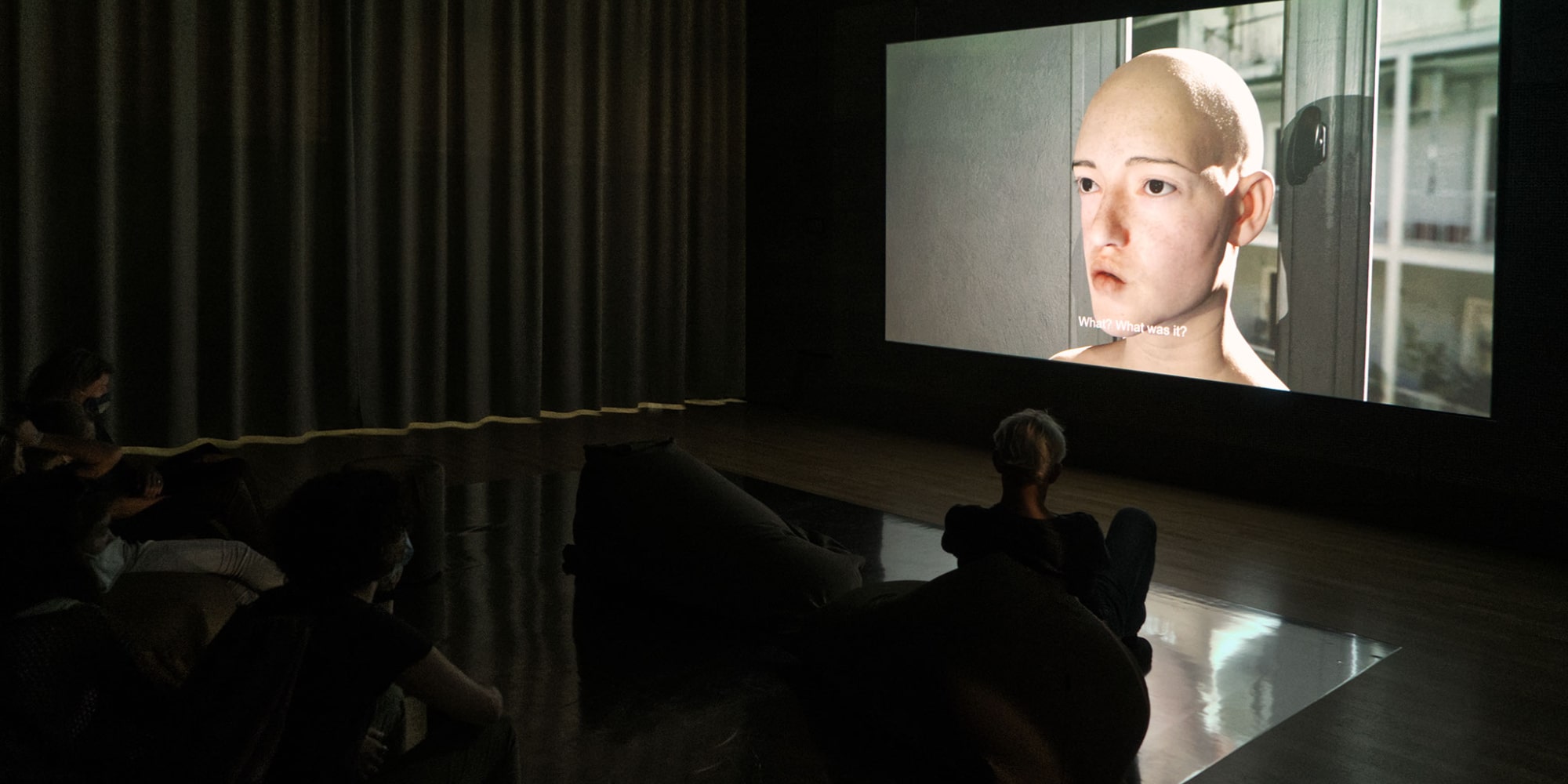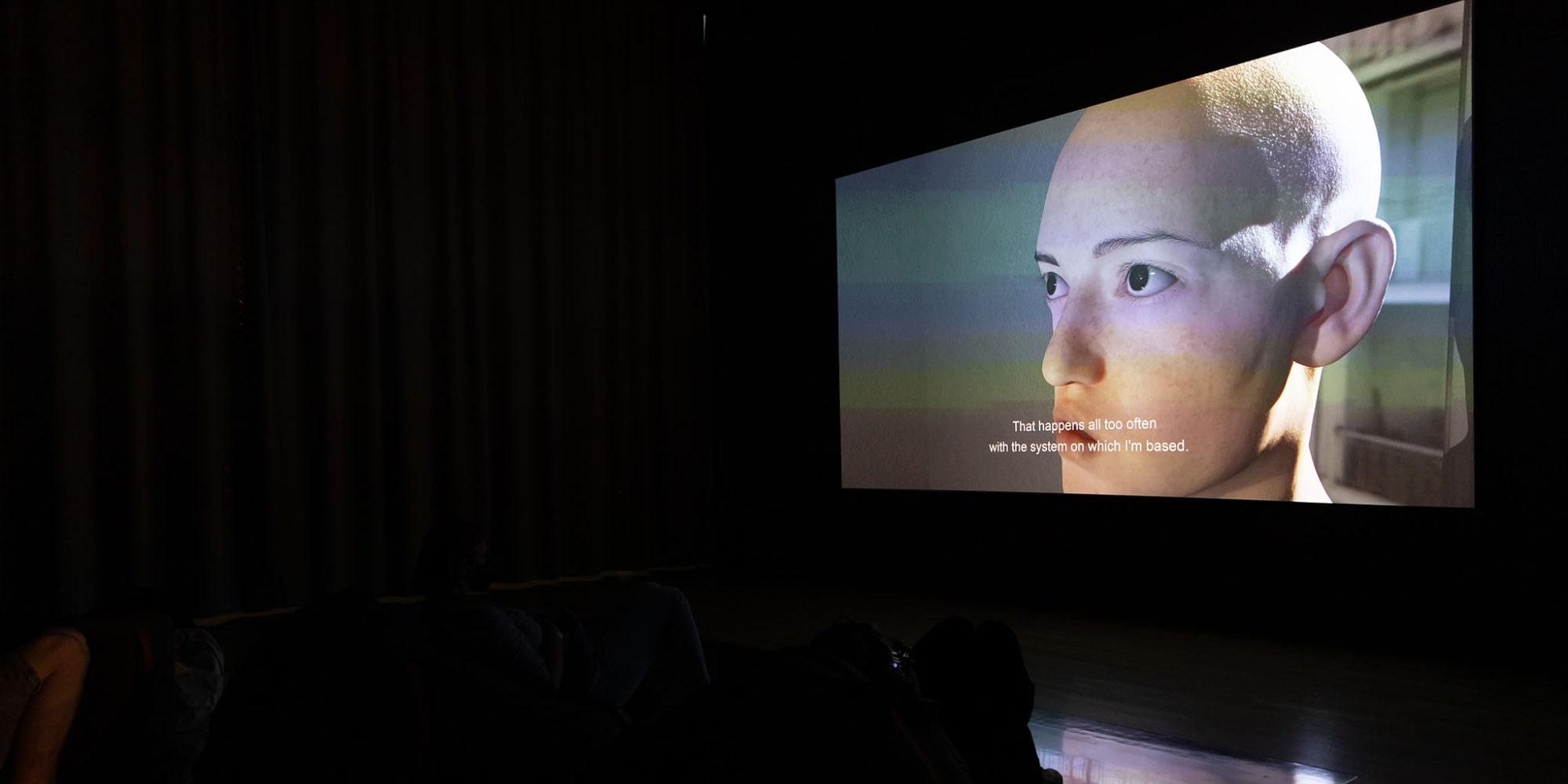by Laura Welzenbach, Head of Ars Electronica Export
The first year of the ArtScience Residency enabled by Art Collection Deutsche Telekom was a success. The residency was dedicated to artists from Southeastern Europe, who work at the intersection of art/science/technology and are interested in the social impact of technological developments. A science mentorship exchange allowed a deep dive into relevant questions around the open call’s keywords like digital democracy, transformation of society, artistic intelligence vs. artificial intelligence, sustainability and humanism as well social responsibility.
A science partner was found with the JKU, the Johannes Kepler University in Linz and in particular with Martina Mara’s Robopsychology Lab. After the open call and comprehensive discussion amongst the jury members Kyriaki Goni became the first artist in resident in the framework of this partnership.
The remote exchange between artist Kyriaki Goni and scientist Martina Mara kicked off in February and was followed by a research and production period. In that phase Kyriaki worked on her piece which should become known under the title Not Allowed for Algorithmic Audience and was premiered at the Ars Electronica Festival in September 2021.
In the fictional narrative of Not Allowed for Algorithmic Audiences an IPA (Intelligent Personal Assistant) borrows a face online and appears in the screens of their users. They shares insights about how and what they listen to as well as what they are able to do with this information. See how they look like in this short documentary:
Not Allowed for Algorithmic Audiences is the first artwork that came out of the ArtScience Residency. How did we get there? First, we were excited to win Martina Mara, Head of the Robopsychology Lab at JKU Johannes Kepler University as a science partner. Her research focuses on psychological conditions of human-centred technology development and interdisciplinary research strategies.
With Antje Hundhausen, Vice President Brand Experience from the Deutsche Telekom, Rainald Schumacher from the office for art, Kerstin Pell from the ArtScience program at the Johannes Kepler University Linz as well as Ars Electronica’s very own Gerfried Stocker and Martin Honzik the jury was complete. After hours of talking about the more than 120 submissions the winner was found with Greek artist Kyriaki Goni.
“We are very excited that our three years ArtScience Residency starts with Greek artist Kyriaki Goni. Her artistic work focuses on the intersection between technology and society and more specifically the relations between the human being and the machine. Together with the Ars Electronica and the Linz Institute of Technology of Johannes Kepler University, I am confident, that we will provide the artist with experiences and knowledge as well as new inspirations to further research on the topic.”
Antje Hundhausen, Vice President Brand Experience, Deutsche Telekom
In February Martina and Kyriaki met the first time. Due to COVID-19 the mentoring sessions could only take place remotely, but that didn’t stop the inspiring exchange between these two incredible thinkers. Here’s why Martina enjoys working with artists.
And…
We indeed share this last point of view and are continuing bringing various stakeholders in touch with artists. Kenza Ait Si Abbou Lyadini, who works at the IT department of Deutsche Telekom, met Kyriaki also for a private online conversation where we had the chance to sneak in and listen.
Critical questions and smart answers shaped the conversation.
Kenza also agrees with Martina on the impact of art and artistic work for conveying complex matters and building narratives for understanding. You can find the full interview with Kyriaki, Martina and Kenza on our website.
Inspired by this exchange Kyriaki developed the speculative character of an intelligent home assistant that takes on human-like avatar face in order to be also seen, apart from being heard. With this virtual body they start to talk about their ancestorsday, anatomy, periphery, voice and listening infrastructures as well as about how NOT to be heard in seven monologues.
“What does the title mean? Well, a big number of audiences online are mainly algorithmic. Algorithms are trained on the auditory information that is produced and uploaded by humans. In this case, auditory information is produced by an algorithm, the IPA known with the wake word VOICE. The information they produce is not meant to be ‘heard’ by algorithms. It is strictly addressed to human audiences.”
Kyriaki Goni
Kyriaki collaborated with an actress and 3D designer in order to produce this 27min long film, that allows you as a viewer to switch the role and instead of a digital assistant listening to you, you listen to the digital assistant. The IPA is situated in the city of Athens. The viewer does not receive any info about the exact year of this narration, but at the beginning of each monologue a timestamp along the temperature appears shortly on the screen. The story develops in a week’s time at 17:30 each day. The temperatures are very high between 42-45 °C Kyriaki makes a subtle comment on the current climate urgency and its devastating consequences. This discussion is present in other parts of this work as well. The overexploitation of nature and especially of peripheries of the western world is connected with the use of AI technologies and the devices you use. Kyriaki reflects in detail about her development process in the blog post The Voice of the Future.
For the very first time the art installation was open to the public on September 8th at the Ars Electronica Festival theme exhibition Digital && Life.







We are very excited to announce that the artwork Not Allowed for Algorithmic Audiences by first time resident Kyriaki Goni was also acquired by the Deutsche Telekom into their collection. Besides the artwork was also shown at PROYECTO HÍBRIDO. ARS ELECTRONICA EN FACYL 2021, an art and culture festival in Salamanca, Spain. We are certain that many more exhibition opportunities will come.
And before we wrap up this first year of the ArtScience Residency, some final remarks from Kyriaki Goni that made me – the manager of the project – blush and very very happy at the same time.
The ArtScience Residency is enabled by the Art Collection Deutsche Telekom in partnership with Ars Electronica and with the support of the Johannes Kepler University in Linz, Austria.